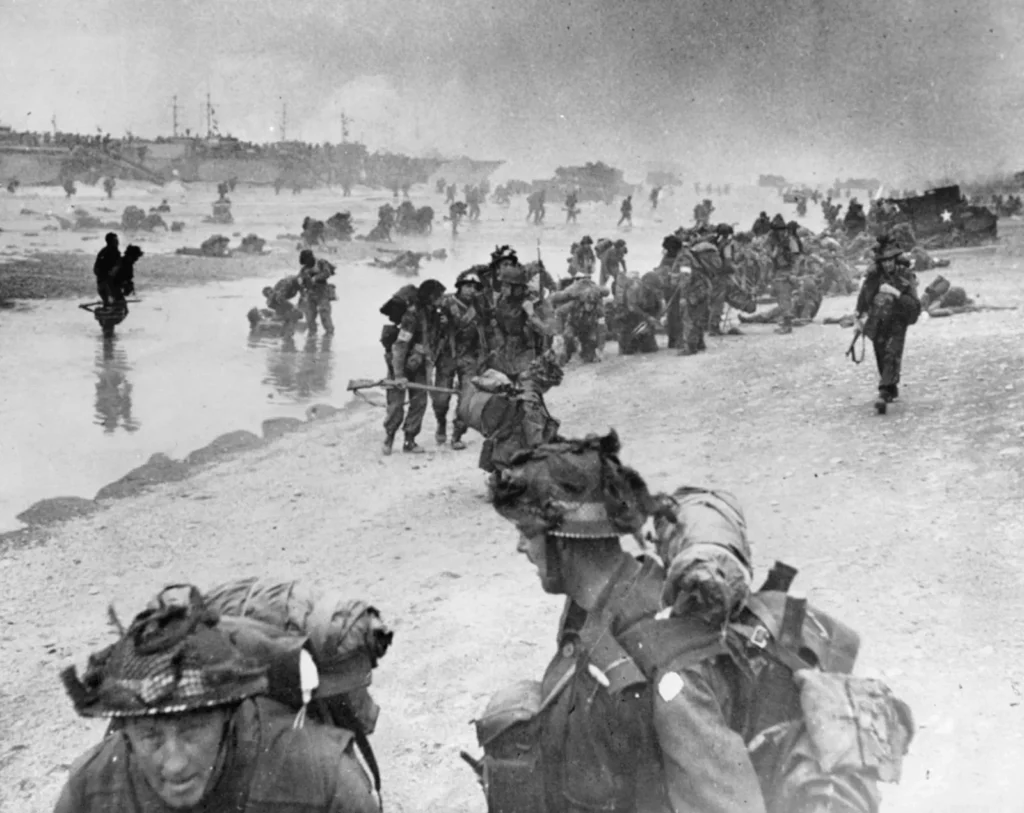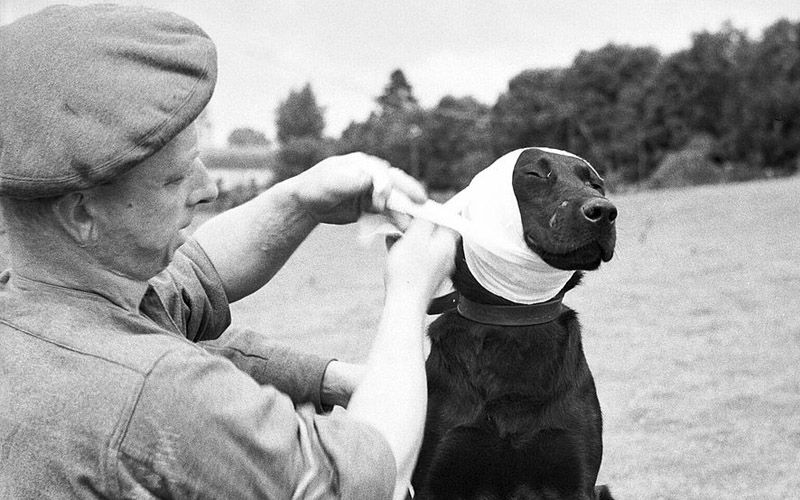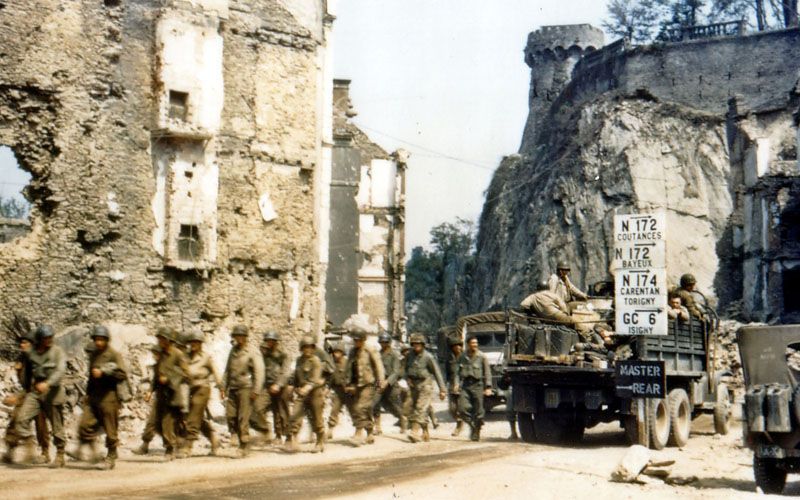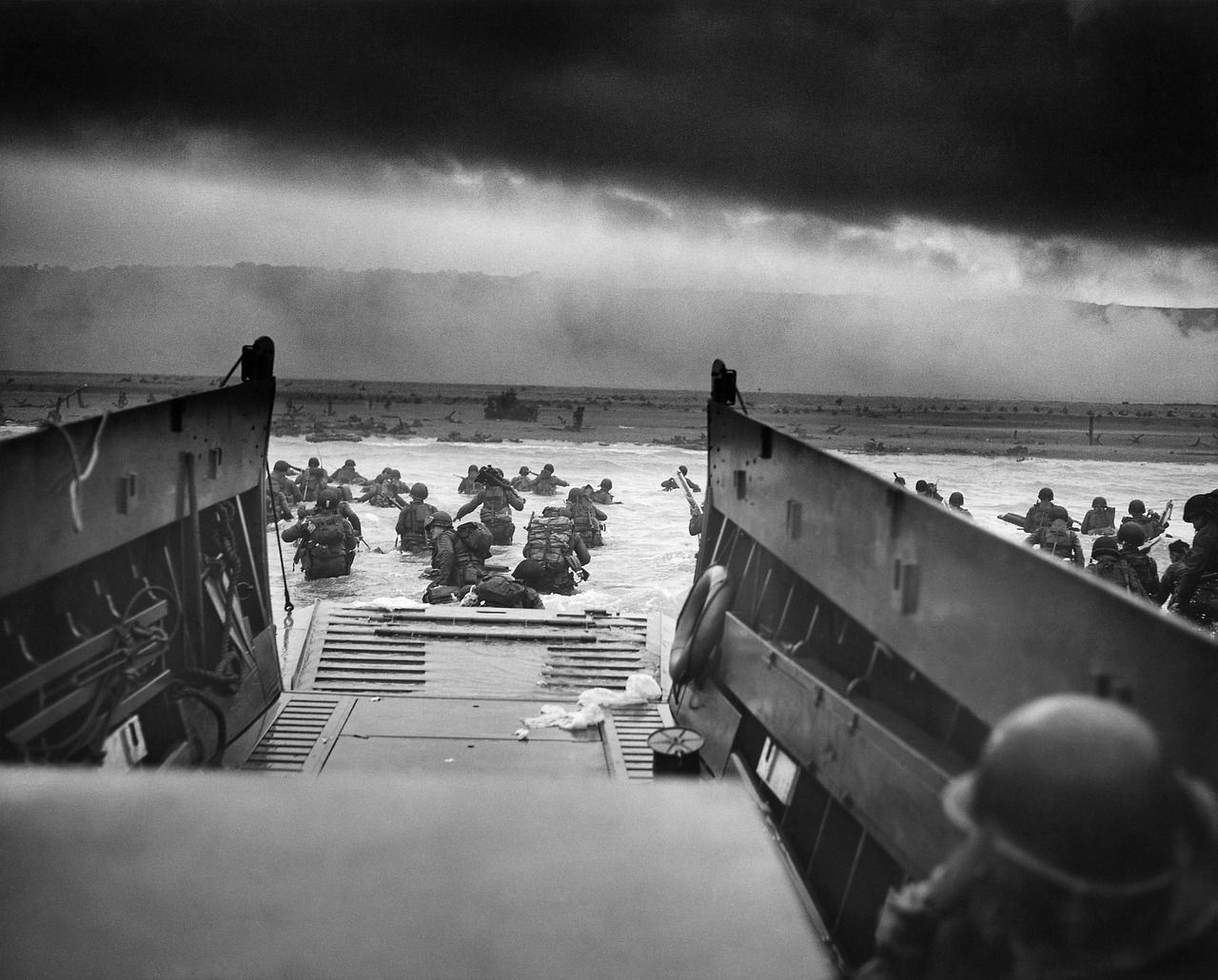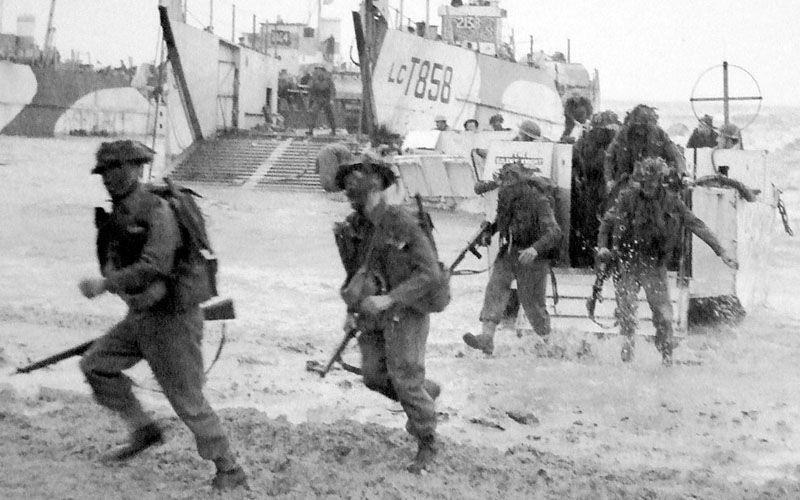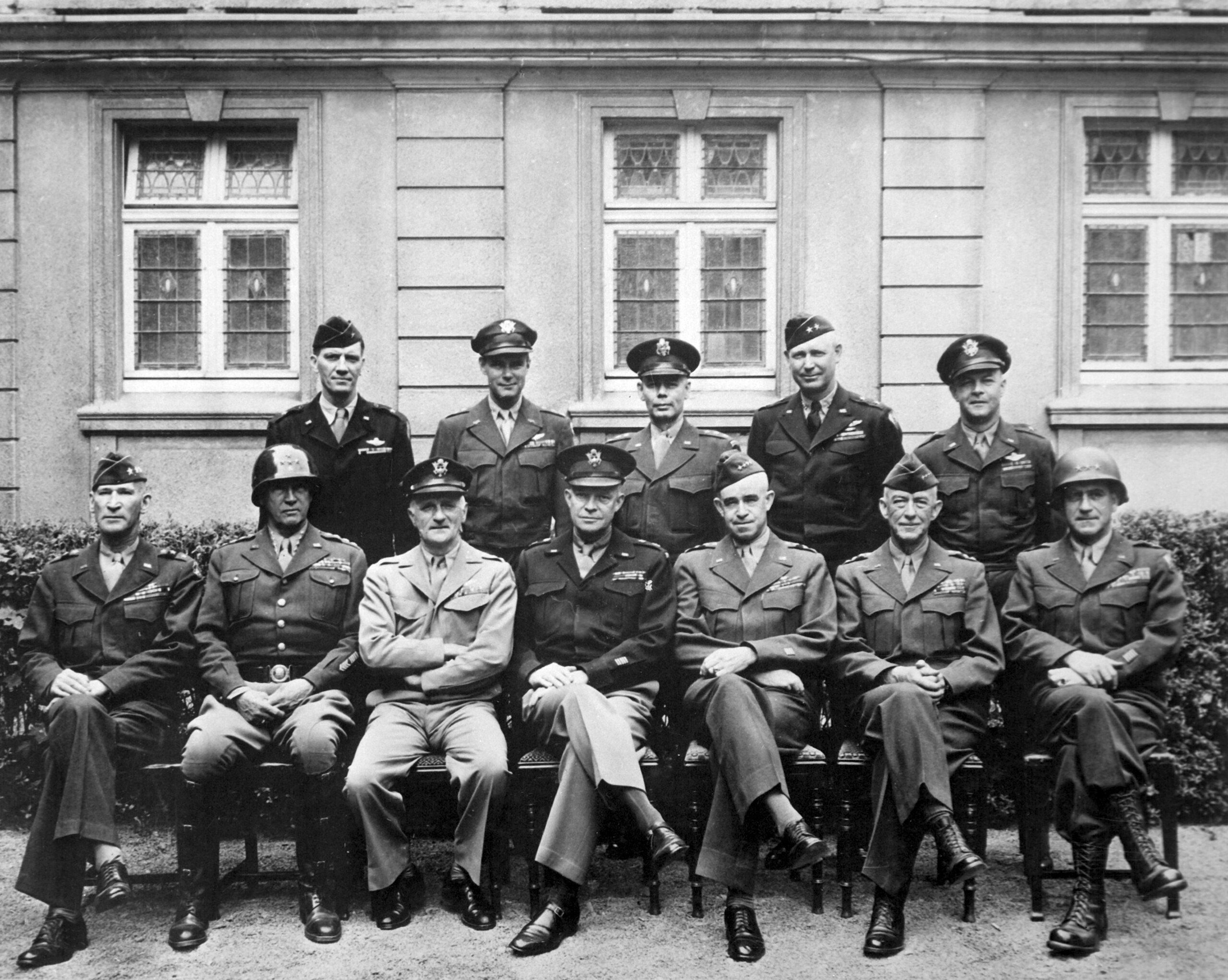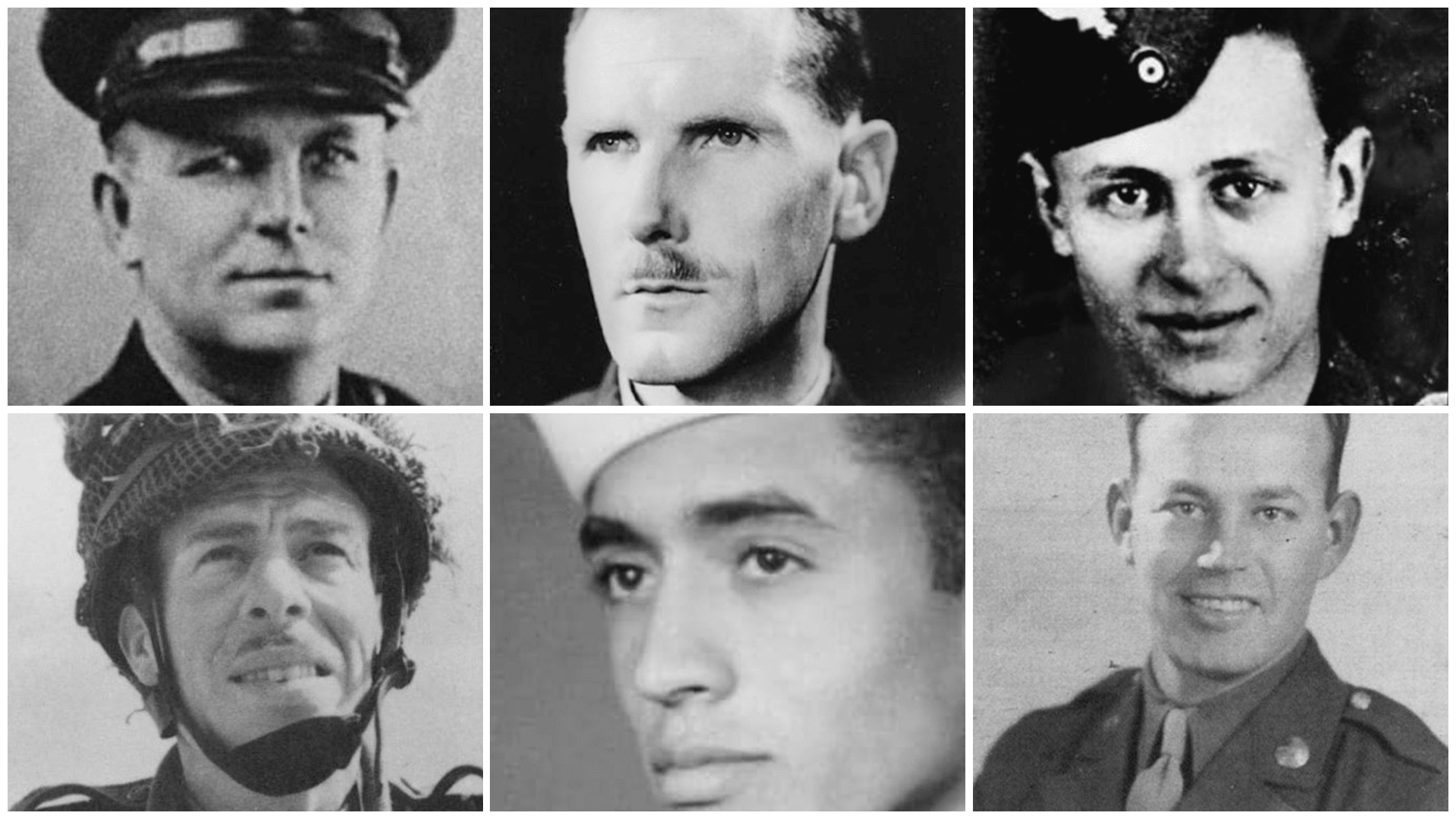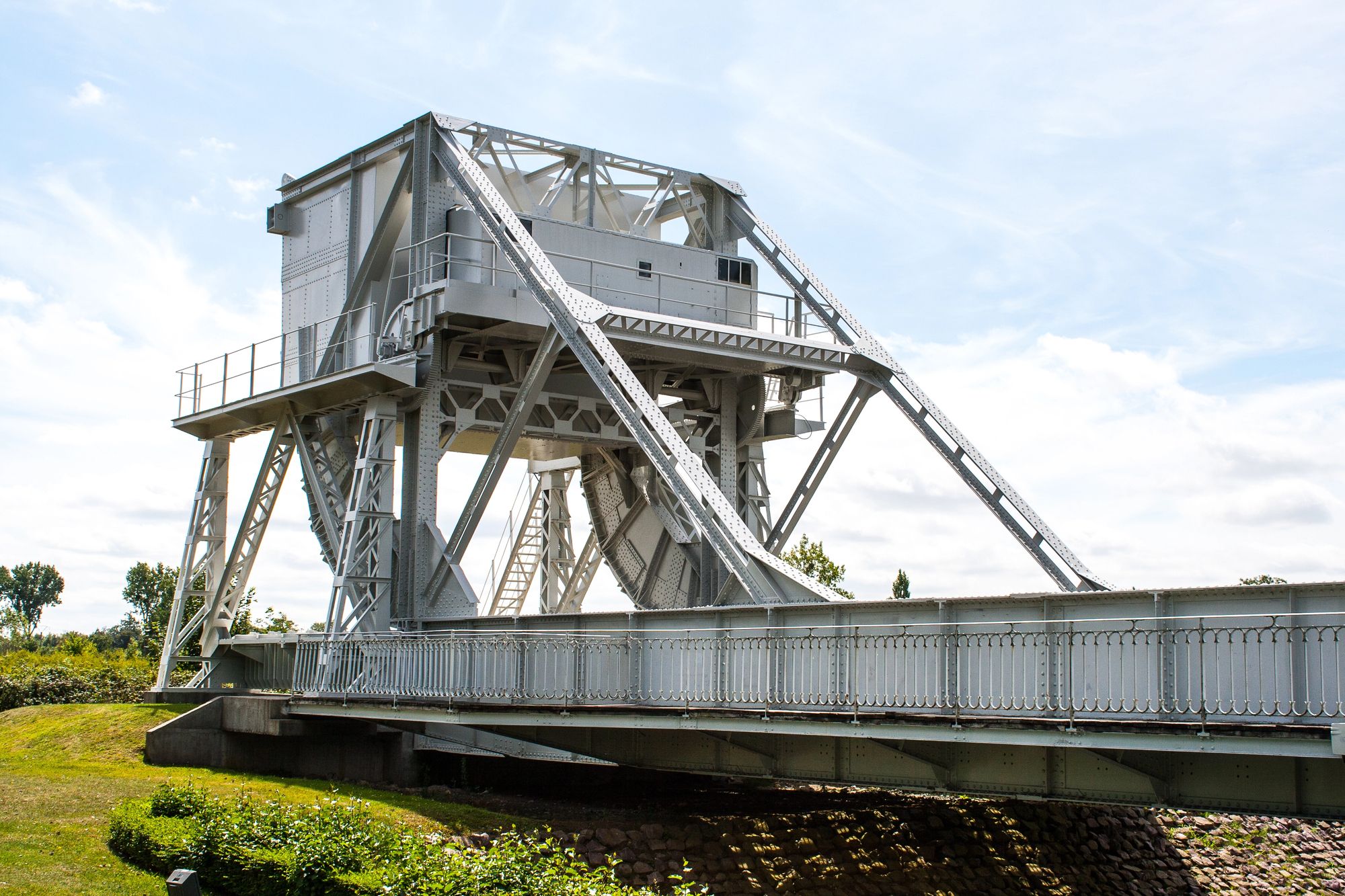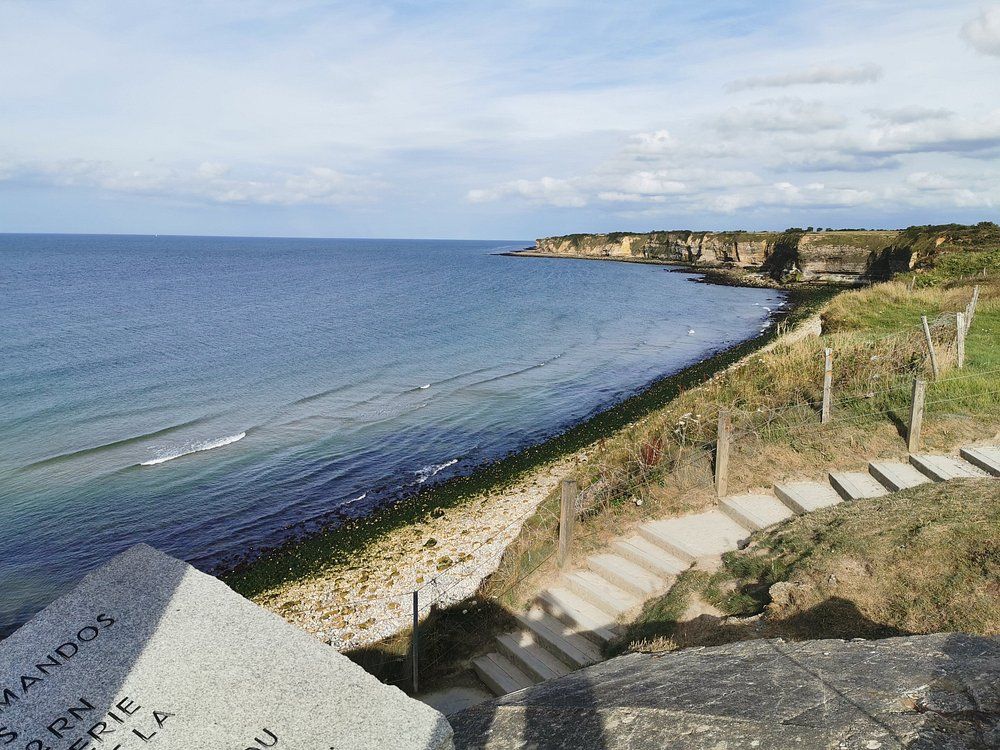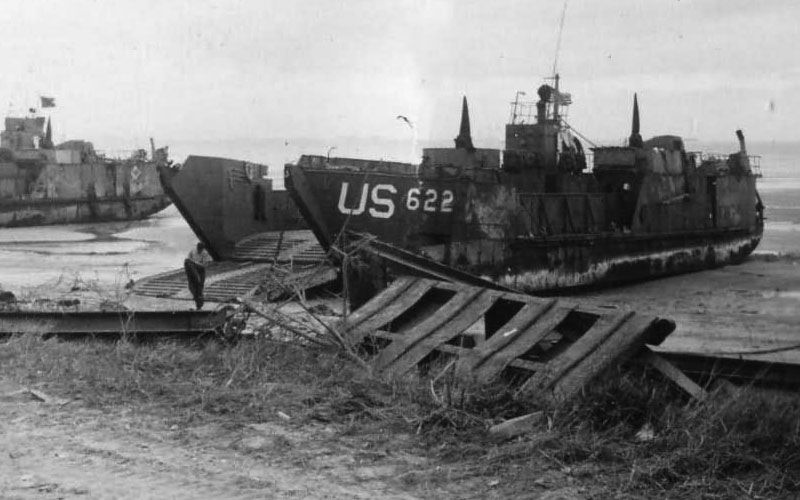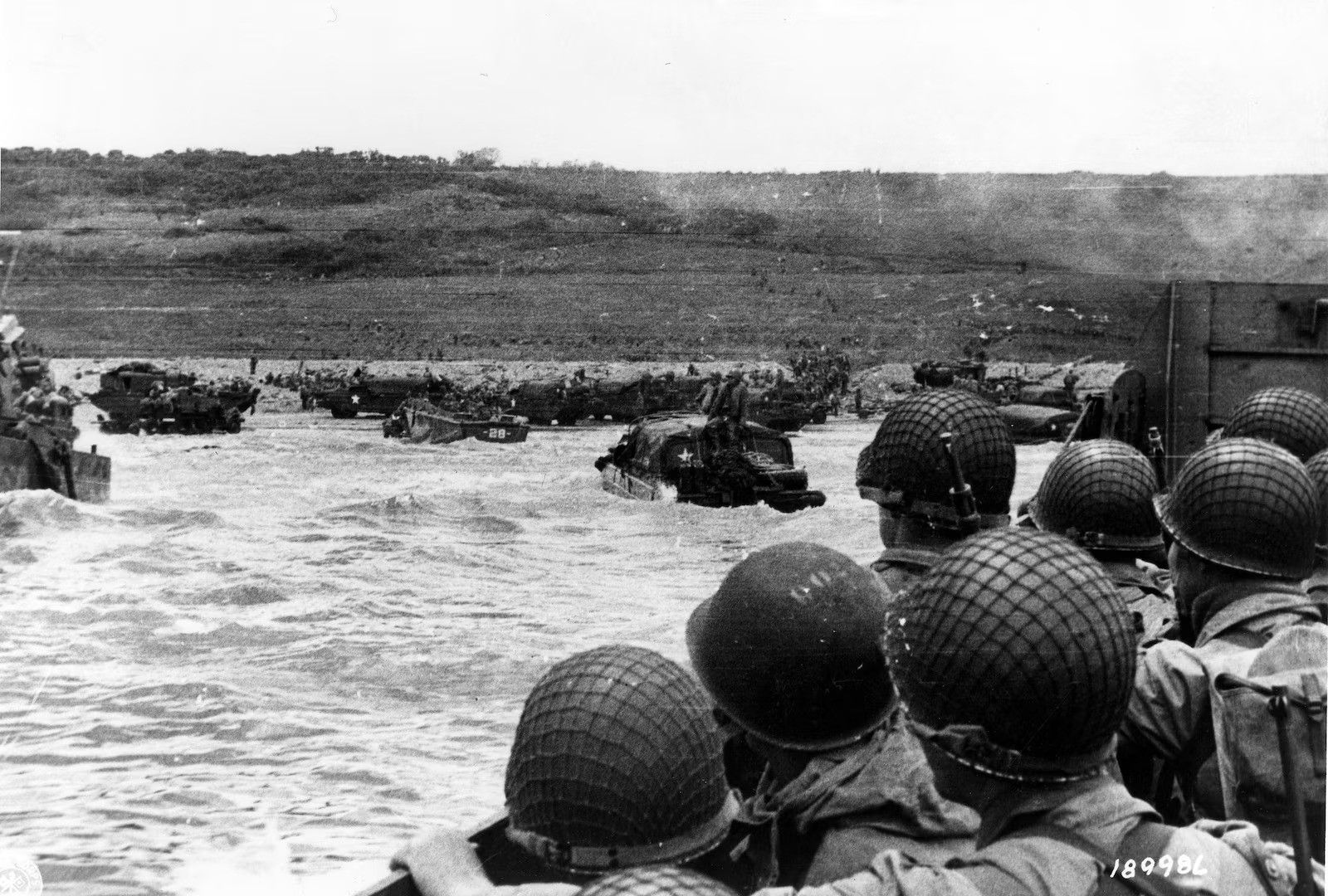Sword Beach was the easternmost of the five landing areas during the Allied invasion of Normandy on June 6, 1944, also known as D-Day. Located between Langrune-sur-Mer and the city of Ouistreham, this stretch of coastline was a critical component of Operation Neptune, the initial assault phase of the larger operation to liberate France from Nazi control. British troops who landed at Sword Beach faced German defenses while aiming to push inland about eleven miles to capture the strategic city of Caen.
As part of the Anglo-Canadian sector of the invasion, Sword Beach connected to Juno Beach on its western flank. The assault force consisted primarily of British 3rd Infantry Division soldiers, supported by specialized armored vehicles designed to overcome beach obstacles. Their mission was not only to establish a beachhead but to rapidly advance toward Caen and link up with airborne forces who had dropped behind enemy lines hours earlier.
The story of Sword Beach represents the careful planning, courage, and sacrifice that characterized the entire D-Day operation. While the Allied forces did not reach all their Day 1 objectives, their foothold on Sword Beach became part of the foundation for the eventual liberation of Western Europe. The events that unfolded on this stretch of Normandy coastline changed the course of World War II and still resonate in military history today.
Historical Context of D-Day
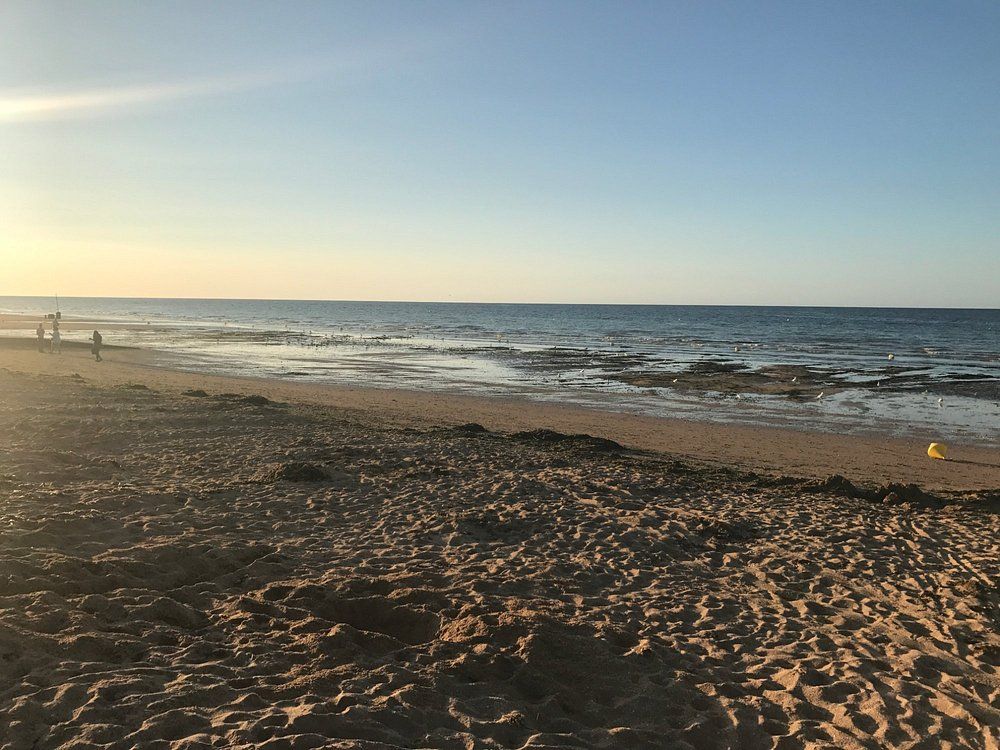
D-Day represented the largest amphibious military operation in history, requiring years of meticulous planning and involving forces from multiple Allied nations. The invasion aimed to establish a foothold in Nazi-occupied Western Europe from which to launch the campaign to defeat Hitler’s Germany.
Planning Operation Overlord
Operation Overlord was developed through extensive strategic planning that began in 1943. Allied planners, led by General Dwight D. Eisenhower, selected Normandy as the invasion site rather than the more obvious Pas-de-Calais region. This decision offered tactical advantages including shorter air coverage distance from England and less heavily fortified beaches.
The planners divided the 50-mile Normandy coastline into five landing zones: Utah and Omaha (American), Gold and Sword (British), and Juno (Canadian). Each beach required specific assault plans based on terrain, expected defenses, and objectives.
Weather conditions played a crucial role in timing the invasion. Eisenhower famously delayed the operation by 24 hours due to poor weather, finally launching on June 6, 1944, despite less-than-ideal conditions.
Role of Airborne Assault
Airborne forces played a vital role in the hours before the beach landings. Late on June 5 and early June 6, approximately 24,000 American, British, and Canadian paratroopers dropped behind enemy lines in Normandy.
Their mission was critical: secure key bridges, crossroads, and causeways to prevent German reinforcements from reaching the beaches. British airborne troops landed east of Sword Beach to protect the invasion’s eastern flank.
American paratroopers faced significant challenges when many were scattered off-target, but this inadvertently confused German defenders about the invasion’s scale and objectives. Despite the confusion, airborne forces successfully disrupted German communications and secured crucial inland positions.
The airborne assault effectively isolated the beach landing areas from immediate German counterattack, giving the seaborne invasion forces precious time to establish their beachheads.
Strategic Importance of Sword Beach
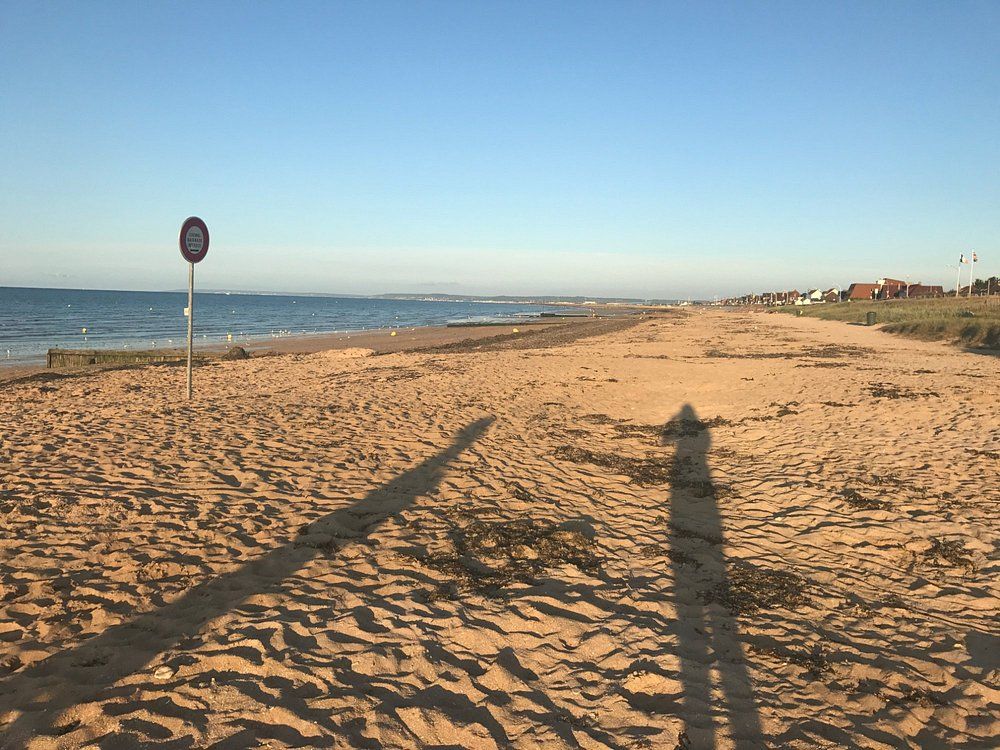
Sword Beach held critical strategic value for the Allied forces during the D-Day landings. Its position and surrounding features made it essential for establishing a foothold in Normandy and advancing inland toward key objectives.
Geographical Position
Sword Beach was the easternmost of the five landing beaches in the Normandy Invasion. It stretched along the French coastline near the towns of Ouistreham and Lion-sur-Mer. This location gave Allied forces a strategic advantage by placing them within striking distance of Caen, a major transportation hub.
The beach’s proximity to the Orne River and Caen Canal provided natural boundaries that could help protect the Allied flank once secured. These waterways were crucial for controlling movement in the region and preventing German counterattacks from the east.
British forces recognized that holding this position would allow them to establish a defensive line while pushing inland. The relatively flat terrain behind Sword Beach offered better mobility compared to other landing areas.
Objectives for the Allies
The primary objective for forces landing at Sword Beach was capturing the city of Caen. As a major road and rail center, Caen controlled access to the southern portion of the Normandy region. Taking this city would disrupt German communications and troop movements.
Securing Pegasus Bridge over the Caen Canal was another crucial goal. British airborne forces seized this bridge before the main landings to prevent German reinforcements from reaching the beaches. This action demonstrates how Sword Beach operations extended beyond the shoreline itself.
The British 3rd Division, responsible for the Sword Beach assault, also aimed to link up with Canadian forces landing at Juno Beach to create a united front. This connection would strengthen the entire eastern flank of the Allied invasion force.
Forces Deployed at Sword Beach
Sword Beach saw a complex arrangement of Allied and Axis forces during the D-Day landings on June 6, 1944. British forces took primary responsibility for this easternmost landing zone, with specialized units assigned specific objectives to secure the beachhead and push inland toward Caen.
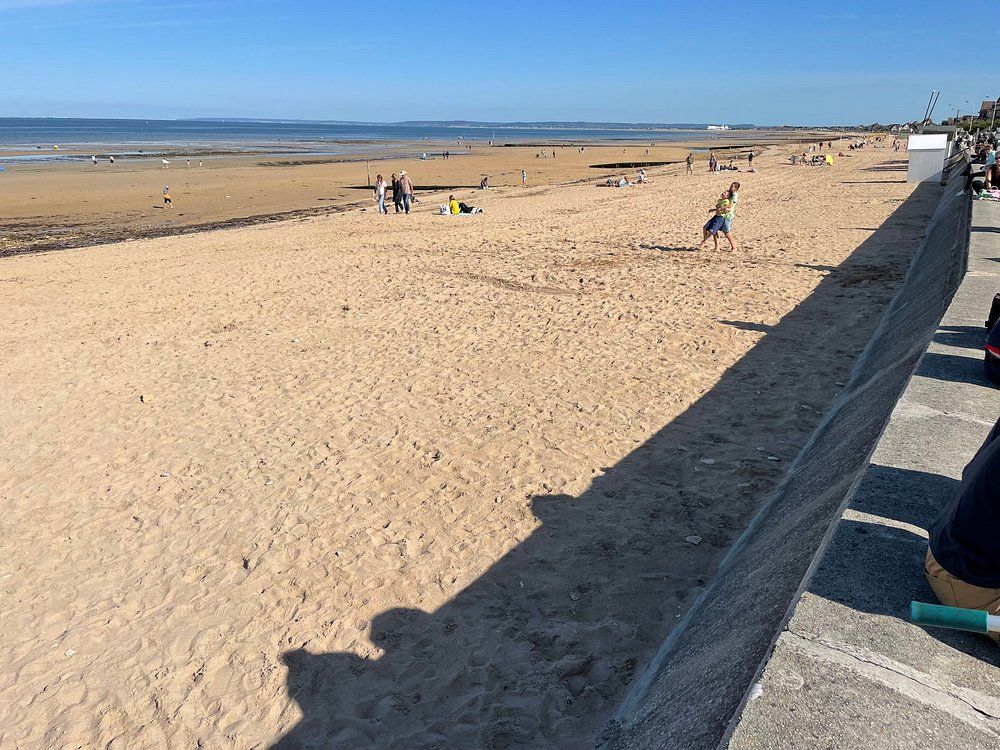
British 3rd Infantry Division
The British 3rd Infantry Division led the assault on Sword Beach under the command of Major General Tom Rennie. This division formed the main attacking force and was tasked with establishing the beachhead before pushing inland toward Caen.
The division included:
- 8th Infantry Brigade
- 9th Infantry Brigade
- 185th Infantry Brigade
- Various attached units including commandos and specialized armor
The 3rd Division landed with support from DD (Duplex Drive) tanks and specialized engineering vehicles designed to overcome beach obstacles. Their immediate objectives included securing the beachhead and linking up with airborne forces that had landed earlier.
British commandos, including Lord Lovat’s 1st Special Service Brigade, landed alongside the division with orders to push inland and relieve the airborne troops at the Orne bridges.
British 6th Airborne Division
The British 6th Airborne Division played a crucial role in the overall Sword Beach operation. They dropped east of the Orne River during the early morning hours of D-Day, hours before the beach landings began.
Their primary objectives included:
- Capturing intact bridges over the Caen Canal and River Orne
- Destroying the German gun battery at Merville
- Securing the eastern flank of the invasion area
The division’s most famous action came when Major John Howard’s glider-borne troops from the Oxfordshire and Buckinghamshire Light Infantry captured “Pegasus Bridge” in a daring coup de main operation. This action prevented German reinforcements from attacking the landing beaches from the east.
By securing these objectives, the airborne forces protected the vulnerable eastern flank of the Sword Beach landings from potential German counterattacks.
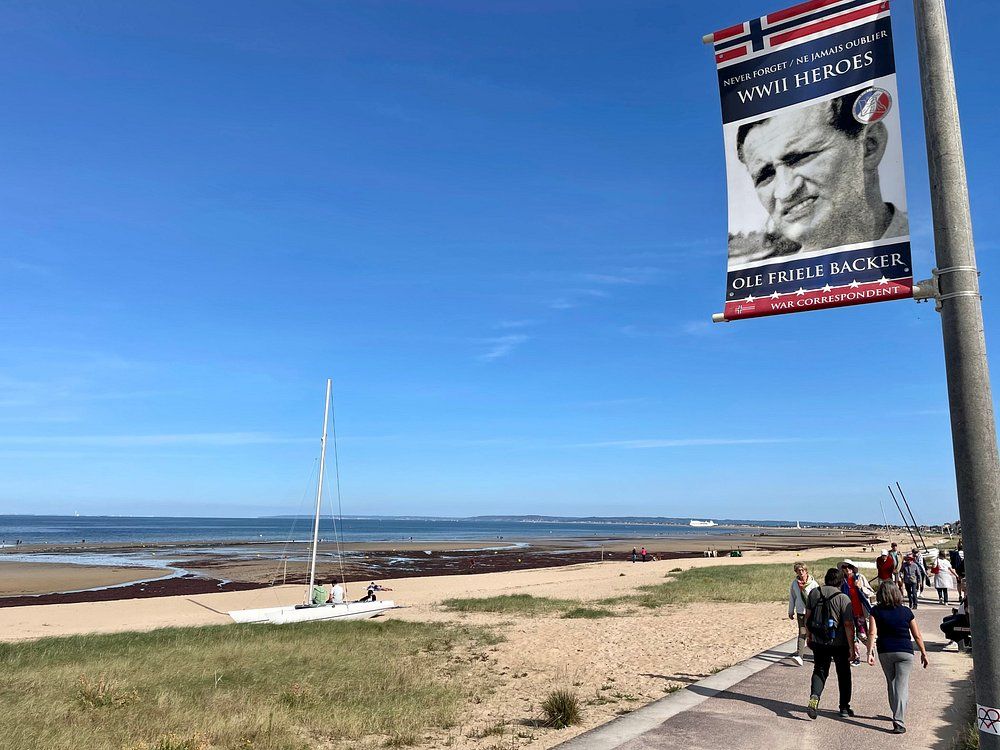
German Defending Units
Sword Beach and its surrounding areas were primarily defended by elements of the German 716th Infantry Division, a static coastal defense unit. This division was comprised largely of older soldiers and troops deemed unfit for service on the Eastern Front.
The more formidable threat came from the 21st Panzer Division, positioned near Caen. This veteran armored division had fought on the Eastern Front and was one of the few German mobile reserves in Normandy on D-Day.
The German defensive strategy included:
- Concrete bunkers and gun emplacements along the beach
- Extensive minefields and beach obstacles
- Artillery positions covering the likely landing zones
The 21st Panzer Division launched one of the only significant German counterattacks on D-Day, briefly reaching the coast between Sword and Juno beaches before being forced to withdraw due to Allied air superiority and the threat of being cut off.
The Assault on Sword Beach
The Allied assault on Sword Beach began early on June 6, 1944, as part of the broader D-Day landings in Normandy. British forces spearheaded this operation with clear objectives to establish a beachhead and push inland toward key targets.
Naval and Air Bombardment
The assault began around 3:00 AM with intensive naval and air bombardment of German defenses. Allied warships positioned offshore launched a barrage of shells to soften enemy fortifications and reduce their fighting capability.
Royal Navy vessels provided crucial fire support, targeting known German gun emplacements and bunkers along the coastline. The bombardment aimed to neutralize the most dangerous defensive positions before troops reached the shore.
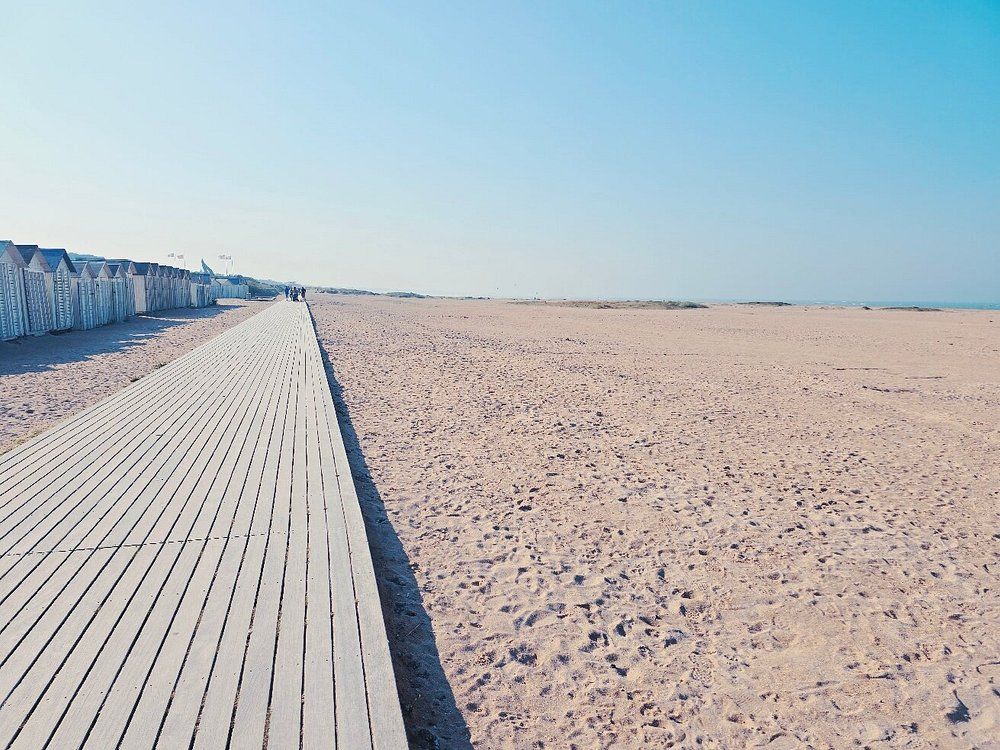
Air support from RAF bombers complemented the naval guns, striking at German positions further inland. This coordinated attack created confusion among German defenders and disrupted their communication networks.
The bombardment lasted several hours, creating a wall of explosions that helped mask the approach of the incoming landing craft. Despite its intensity, some German defenses remained operational, particularly those well-protected by concrete bunkers.
Initial Landings and Use of DD Tanks
British troops from the 3rd Infantry Division led the assault on Sword Beach around 7:30 AM. Due to the narrow frontage, the initial landing was limited to a single brigade, creating congestion on the beach.
DD (Duplex Drive) tanks played a vital role in the landings. These specialized Sherman tanks could “swim” ashore using canvas screens and propellers. Unlike at Omaha Beach, most DD tanks at Sword Beach were launched close to shore, ensuring many reached land safely.
The tanks provided crucial heavy firepower to support infantry pushing through German defenses. Their presence helped overcome initial resistance at several strongpoints along the beach.
British commandos and regular infantry followed behind the tanks, establishing a foothold despite facing machine gun fire from German positions. The tide rose quickly, reducing the available beach area and creating additional challenges for landing troops.
Capture of Key Positions
British forces had specific objectives beyond the beach itself. One critical target was the Merville Battery, a German coastal gun position capable of firing on the landing areas. British paratroopers attacked this position before the main landings, successfully neutralizing it despite missing much of their equipment.
Another key objective was Pegasus Bridge, captured in the early hours by airborne forces to prevent German reinforcements from reaching the beaches. This daring operation secured a vital crossing over the Caen Canal.
British commandos pushed toward Ouistreham, a coastal town with significant German defenses. They fought through streets and buildings to secure this position by mid-afternoon.
By evening, British troops had advanced about 5 miles inland from Sword Beach. Though they fell short of reaching Caen (a day-one objective), they had established a solid beachhead and joined with Canadian forces from Juno Beach.
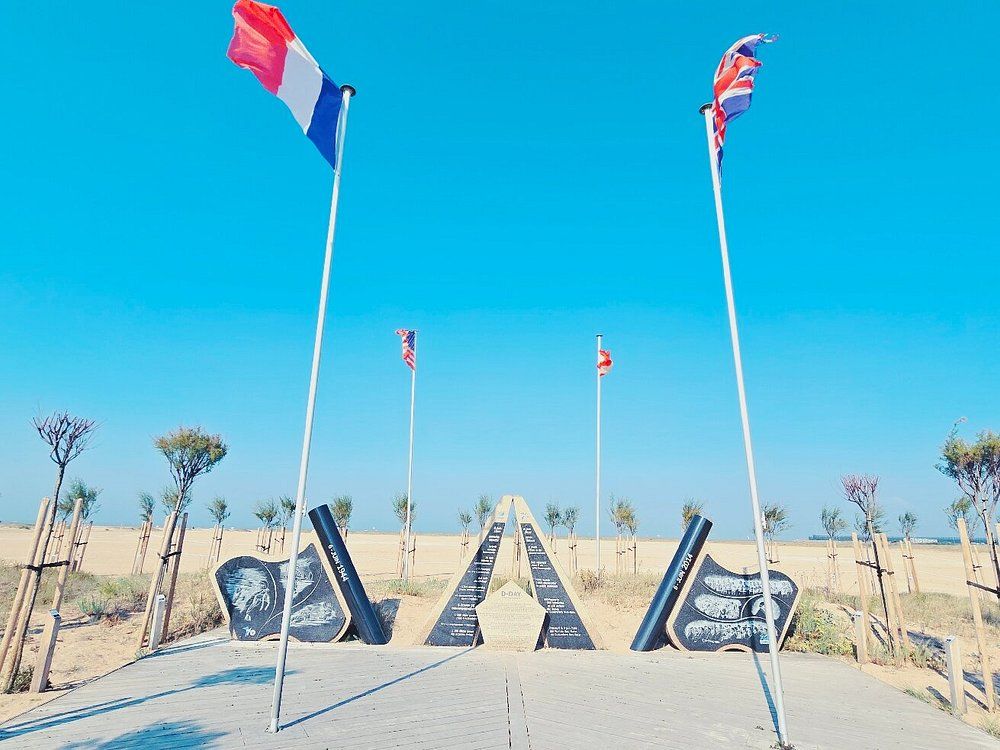
Resistance and Counterattacks
The Allied forces landing at Sword Beach faced determined German resistance and a significant armored counterattack. German defenders fought fiercely from prepared positions while the 21st Panzer Division launched the only major counterattack on D-Day.
German Resistance at Sword Beach
The 716th German Infantry Division defended Sword Beach with impressive firepower. They positioned 500 machine guns, 50 mortars, and 90 artillery pieces across 29 companies. These defenses created deadly obstacles for the approaching British 3rd Division.
German troops operated from concrete bunkers and fortified positions along the coastline. Many of these emplacements survived the pre-invasion bombardment.
The defenders concentrated heavy fire on landing craft and troops moving across open beaches. This forced British soldiers to fight through multiple layers of resistance.
Despite their numerical disadvantage, German units maintained disciplined defense. They targeted landing zones and access routes to inland objectives like Caen.
Counterattacks by the 21st Panzer Division
The 21st Panzer Division launched the only major German armored counterattack on D-Day. Their tanks and infantry pushed from Caen toward the western edge of Sword Beach, threatening to split Allied forces.
This veteran unit represented the most immediate serious threat to the beach landings. They aimed to drive Allied troops back into the sea before they could establish a secure foothold.
British paratroopers dropped behind enemy lines had destroyed several German positions that could have supported the counterattack. This limited the effectiveness of the German response.
The counterattack briefly reached the coast between Sword and Juno beaches. However, Allied air superiority and determined British resistance prevented a breakthrough.
By evening, the counterattack had lost momentum. The 21st Panzer Division withdrew to defensive positions, unable to dislodge the British from their beachhead.
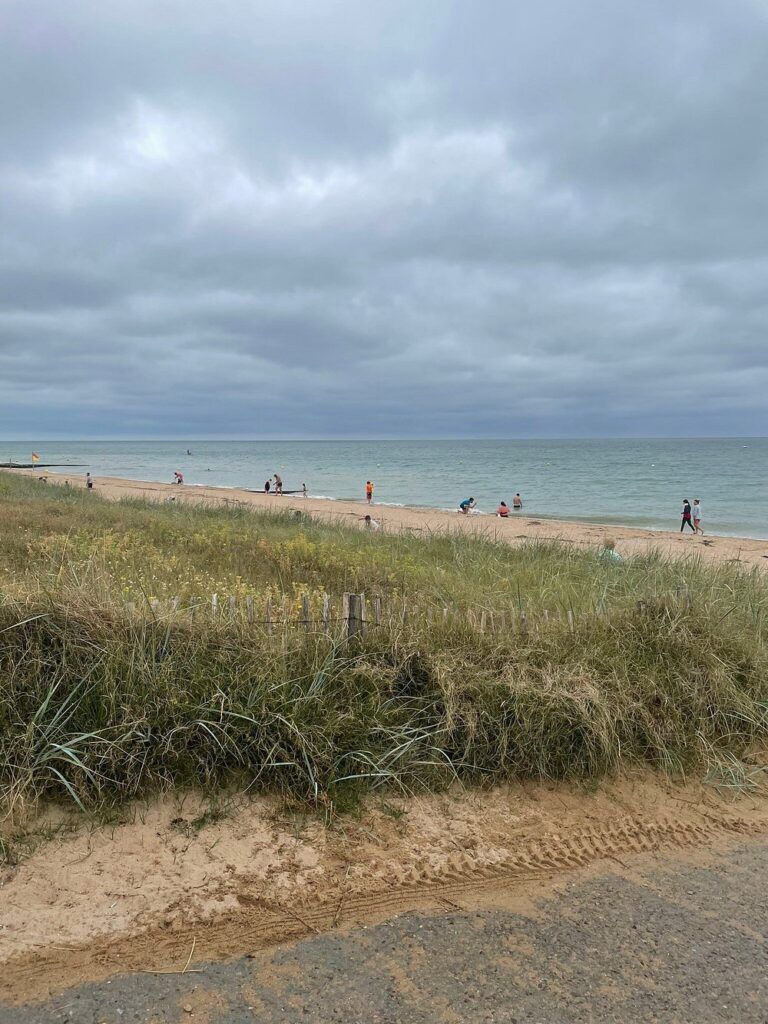
Allied Progress and Link-up With Other Beaches
The Allied forces landing at Sword Beach made steady progress inland while working to connect with adjacent invasion forces. Despite strong resistance, British troops advanced through Norman villages and farmland, gradually expanding their foothold in occupied France.
Expansion Towards Caen
The British 3rd Infantry Division pushed south from Sword Beach toward the city of Caen, a major objective for D-Day. This critical communication hub was supposed to be captured on the first day. However, strong German resistance, including counterattacks by the 21st Panzer Division, halted the British advance at Lebisey, just north of Caen.
The British 6th Airborne Division, which had landed before dawn to secure the eastern flank, successfully held bridges over the Orne River and Canal. This prevented German reinforcements from threatening the beach landings.
By nightfall on June 6, Allied forces had penetrated about 5 miles (8 kilometers) inland from Sword Beach. Though they failed to capture Caen, they established a solid defensive position.
Connection With Juno Beach
British troops from Sword Beach worked westward to link up with Canadian forces from Juno Beach. This connection was crucial for creating a continuous Allied beachhead.
The 1st Special Service Brigade, led by Lord Lovat, played a key role in this effort. By evening on D-Day, British units from Sword had successfully connected with Canadian forces from Juno Beach near the village of Saint-Aubin-sur-Mer.
This link-up created a united front spanning two beaches. It improved supply logistics and defensive positions against potential German counterattacks. The coordination between British and Canadian forces demonstrated the effective planning and execution of the Allied invasion force.
Despite gaps still existing elsewhere along the invasion front, this connection represented a significant achievement for the Allies on the first day of Operation Overlord.
Aftermath of the Sword Beach Landing
The British forces who landed at Sword Beach faced a complex situation after securing the beachhead. While initial casualties were relatively low, challenges emerged as troops pushed inland and encountered stiff German resistance.
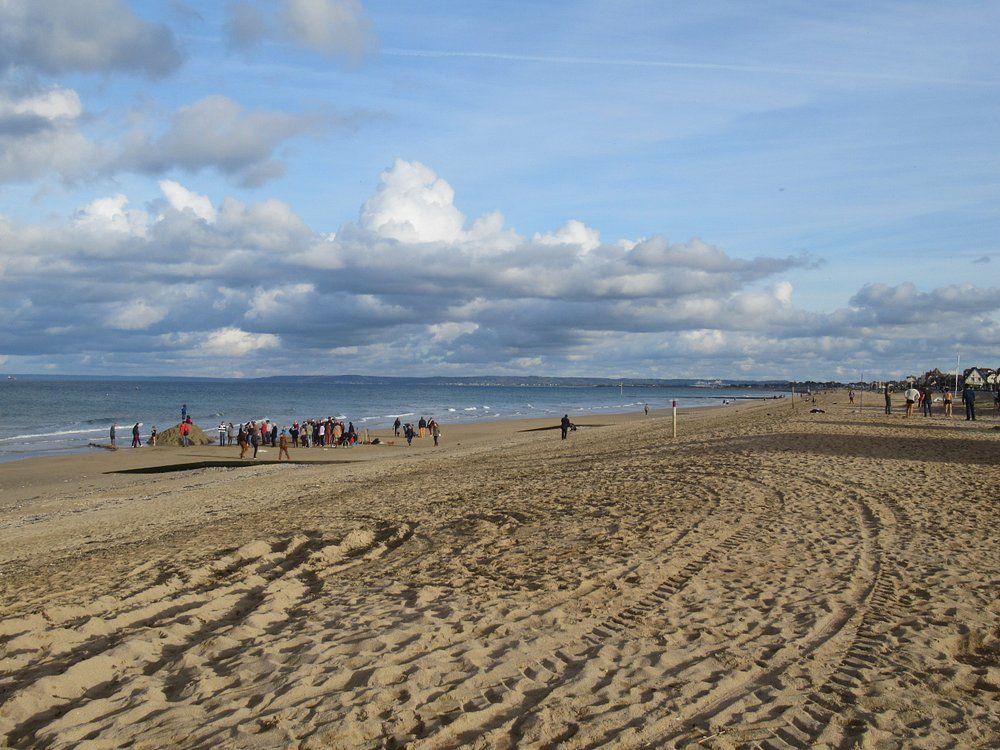
Casualties and Losses
The Sword Beach landing resulted in fewer casualties than expected for the British 3rd Infantry Division. Approximately 630 British troops were killed, wounded, or missing on D-Day at Sword Beach. This relatively low number can be attributed to effective naval bombardment before the landing and the successful deployment of specialized armored vehicles.
German forces suffered significant losses defending the beach area. Several strongpoints were neutralized, and many German soldiers surrendered when faced with overwhelming British firepower.
The 12th SS Panzer Division, although not directly involved in beach defense, later engaged British forces as they moved inland. Their counterattacks caused additional Allied casualties during the days following the initial landing.
Subsequent Military Operations
After securing the beachhead, British forces faced significant challenges advancing inland. Traffic congestion on the narrow exit routes from the beach slowed progress considerably. The advance toward Caen, a key objective about eleven miles inland, proved difficult.
The British 6th Airborne Division, which had parachuted east of Sword Beach before the amphibious landing, successfully captured bridges over the Oren River. This prevented German reinforcements from attacking the flank of the beach landing forces.
The bridgehead established at Sword Beach was eventually linked with neighboring Juno Beach, creating a continuous Allied foothold along the Normandy coast.
Legacy and Significance
Sword Beach remains one of the most historically significant sites of World War II, symbolizing the Allied determination to liberate Europe from Nazi occupation. The courage displayed on these shores continues to inspire generations while reminding us of the tremendous human cost of freedom.
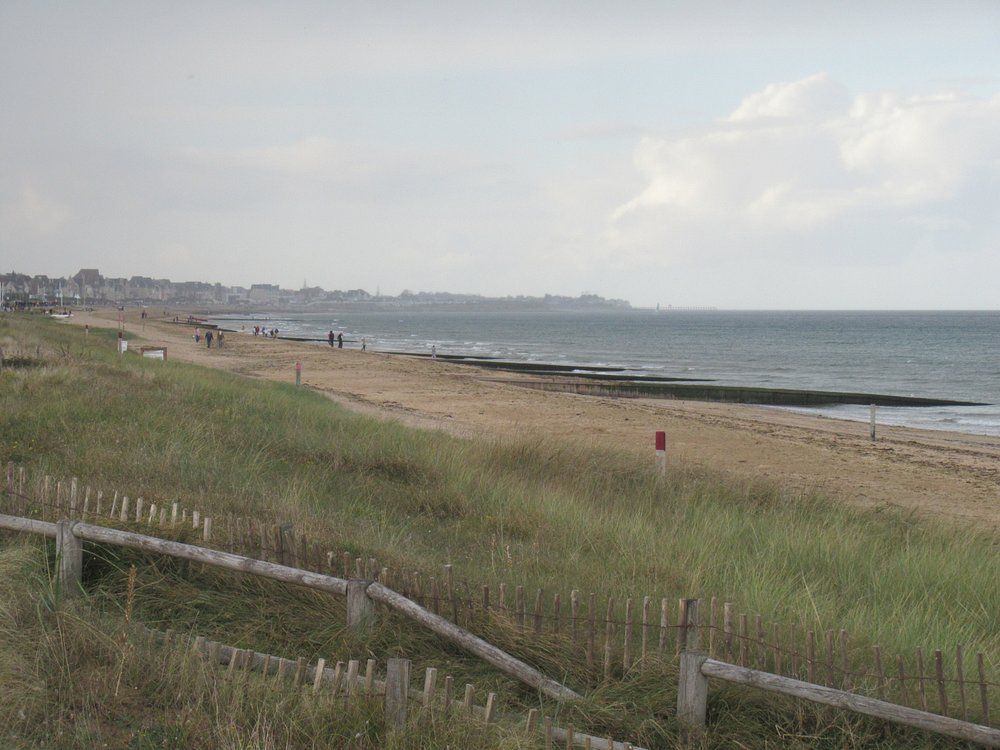
Recognition of Valor and Sacrifice
The bravery shown by British forces at Sword Beach has been commemorated through numerous memorials along the Normandy coastline. Each year, veterans, dignitaries, and thousands of visitors gather to honor those who fought and died during the landings. The Sword Beach Memorial stands as a testament to the 683 British casualties suffered on D-Day.
Military medals and citations, including the Victoria Cross, were awarded to several soldiers who demonstrated exceptional courage during the assault. Lieutenant Den Brotheridge is remembered as the first Allied soldier to die on D-Day, killed while leading the charge to capture Pegasus Bridge near Sword Beach.
French communities liberated by the Sword Beach landings continue to express their gratitude through street names, museums, and annual celebrations.
Sword Beach in Historical Memory
Sword Beach has been preserved as both a historical landmark and an educational resource. Museums like The D-Day Story in Portsmouth showcase artifacts, personal testimonies, and interactive exhibits that help visitors understand the strategic importance of this landing zone in Operation Overlord.
Films, books, and documentaries frequently feature Sword Beach, keeping its memory alive in popular culture. The beach today bears little resemblance to the battlefield of 1944, having returned to its peaceful nature as a vacation destination.
Military academies study the Sword Beach operation as a model of amphibious warfare tactics. The successful integration of naval, air, and ground forces demonstrated principles that continue to influence modern military planning.
The legacy of Sword Beach extends beyond military history, representing the beginning of Western Europe’s liberation and the restoration of democracy.
More Reading:
Read about each of the different landing zones here:
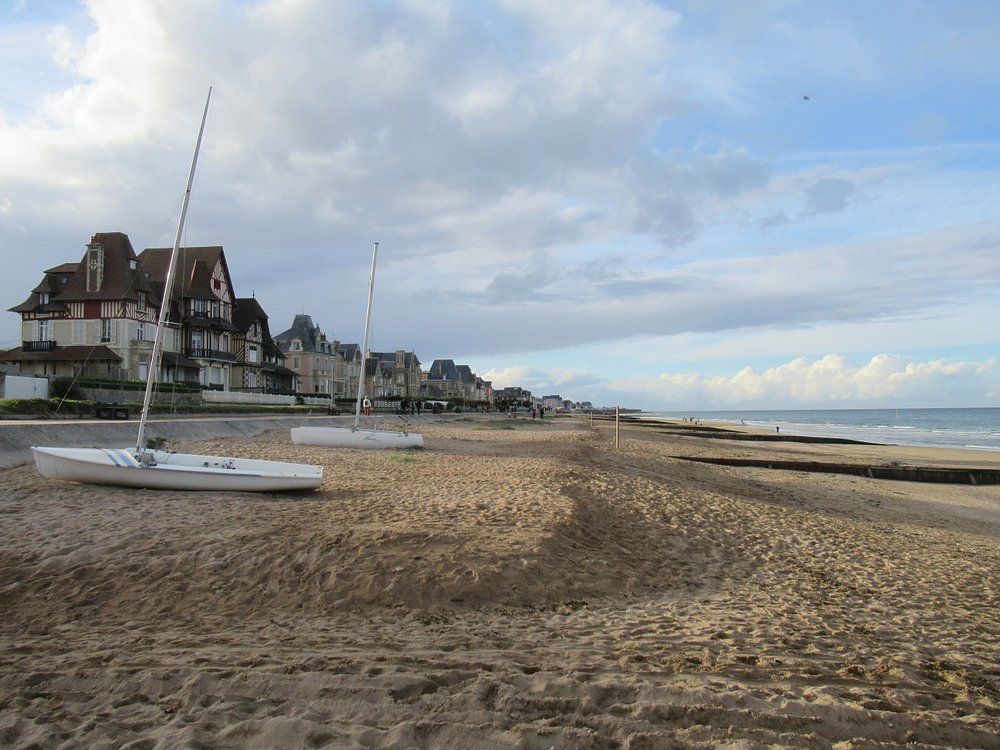
Sword Beach Travel Guide
Sword Beach stretches along the Normandy coast from Ouistreham to Lion-sur-Mer, offering visitors a powerful glimpse into D-Day history. As one of the five Allied landing beaches during the invasion on June 5, 1944, this shoreline witnessed thousands of British troops storming ashore as part of the massive operation to liberate Europe from German forces. Today, Sword Beach combines beautiful coastal scenery with moving memorials that honor the approximately 1,300 casualties suffered during the landing operations.
When you visit Sword Beach, you’ll find numerous museums and monuments that tell the story of British contributions to World War II. The area connects to the broader Normandy region, where Canadian forces also played a crucial role in pushing inland from the beaches toward the Cotentin Peninsula. Walking these shores today, it’s hard to imagine the chaos of that historic morning, but the well-preserved sites ensure we never forget the sacrifice.
Visitor Guide
When you visit Sword Beach in Normandy, you’ll be walking on the easternmost D-Day landing site where British forces came ashore on June 6, 1944. The beach stretches from Ouistreham to Saint-Aubin-sur-Mer, covering about 5 miles of coastline.
Today, Sword Beach offers a mix of historical significance and natural beauty. You can enjoy the sandy shores while reflecting on the incredible bravery displayed during Operation Overlord.
Getting There:
- By car: 3-hour drive from Paris
- By train: To Caen, then local bus to Ouistreham
- By tour: Many D-Day guided tours include Sword Beach
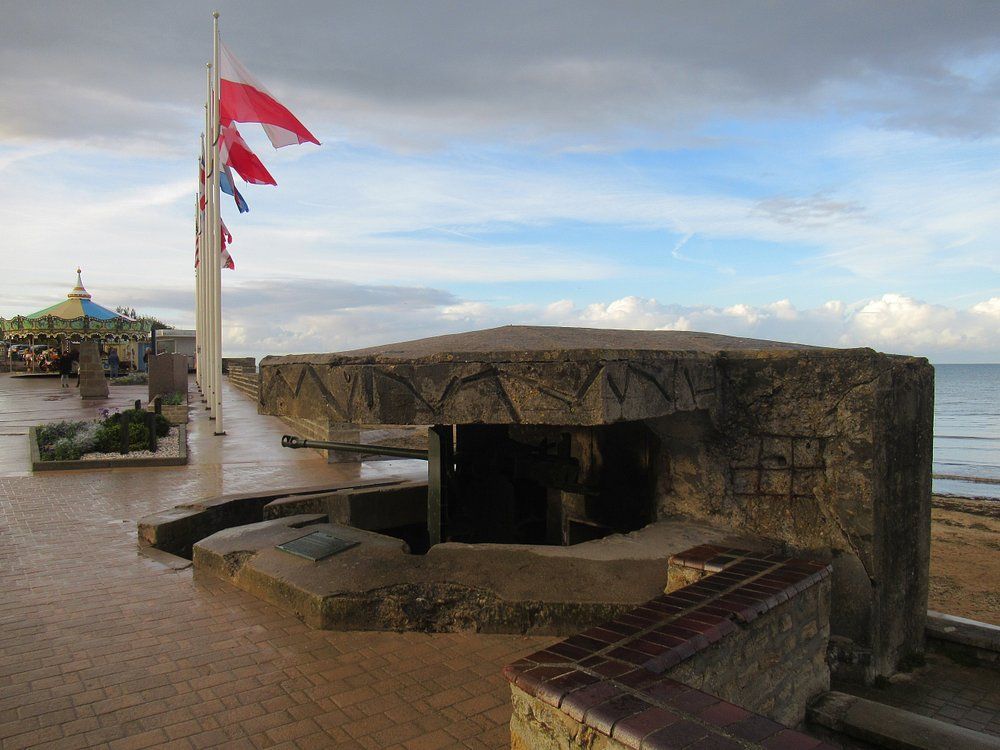
What to See:
- Ouistreham Museum (Le Grand Bunker)
- Monument to Free French Commandos
- British Memorial at Hermanville-sur-Mer
- Atlantic Wall remnants along the shore
The towns near Sword Beach offer charming accommodations and excellent seafood restaurants. Ouistreham serves as a great base for exploring the area.
Plan to spend at least half a day at Sword Beach to properly appreciate its historical significance. The nearby Battle of Normandy Memorial Museum in Caen provides additional context to the D-Day landings.
Wear comfortable shoes as you’ll be walking on sand and potentially uneven terrain. The weather can change quickly, so bring layers even in summer.
Nearby Accommodations
Finding the right place to stay near Sword Beach is easy with many options available. You can choose from hotels, B&Bs, holiday rentals, and budget-friendly places in the surrounding area.
Belle Normandy is located about 19 miles from Sword Beach. This hotel offers a great opportunity to experience local culture, though it’s not directly on the beach.
Many travelers prefer staying in Colleville-Montgomery, which is very close to Sword Beach. This location gives you easy access to the historic landing site while providing comfortable accommodations.
If you’re planning to visit during peak season (summer months or around D-Day commemorations in June), you should book your accommodation well in advance. These periods attract many visitors to the Normandy region.
When choosing where to stay, consider locations that also give you access to important memorial sites. The British Cemetery is closest to Sword Beach, while the Canadian War Cemetery (Bény-sur-Mer) is a short drive away.
The Normandy American Cemetery at Omaha Beach is further west but worth visiting during your stay. Many hotels offer touring information to these solemn and important locations.
Vacation rentals through platforms like Airbnb are available starting from $20 per night. These can be a great option if you want to experience the local lifestyle with more space and privacy.
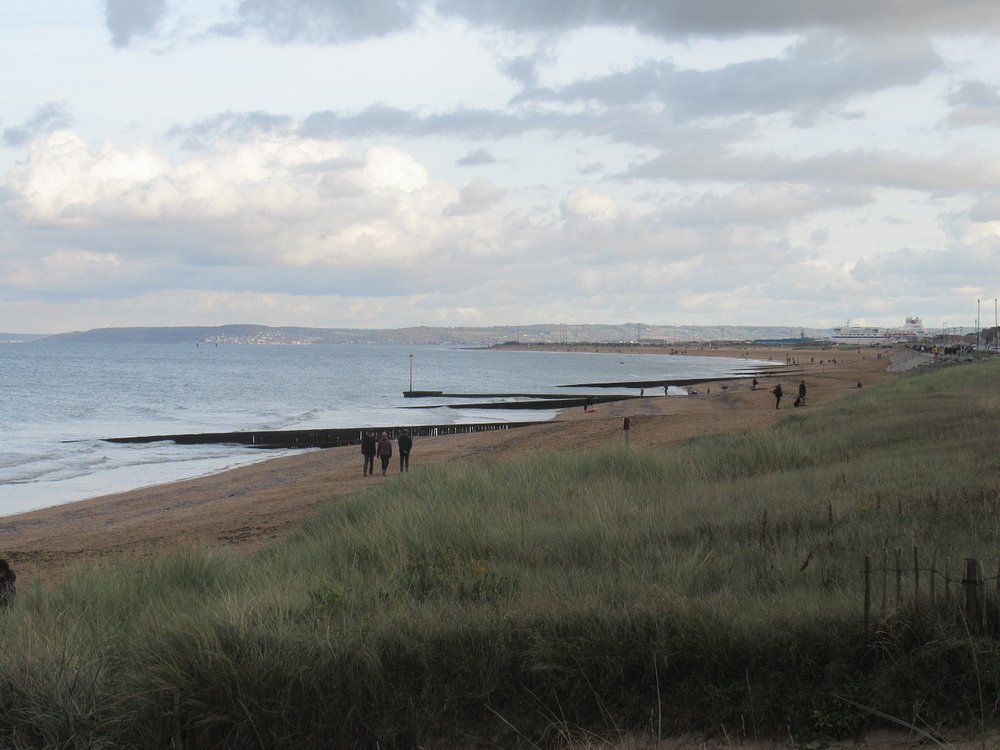
Nearby Things to Do
Sword Beach is surrounded by fascinating historical sites that tell the story of D-Day and beyond. The Pegasus Bridge and Pegasus Memorial Museum are must-visit spots just a short drive away. They commemorate the brave British airborne troops who captured this strategic crossing.
The Merville Battery Museum offers a glimpse into the German defensive positions that Allied forces had to overcome. You’ll see original bunkers and learn about the daring raid to neutralize this threat.
For a broader understanding of D-Day, visit the Caen Memorial. This modern museum provides context about World War II and the Battle of Normandy with interactive exhibits.
Don’t miss the Mulberry Harbours at Arromanches. These massive artificial ports were crucial for supplying Allied forces. The Musée du Débarquement there explains their impressive engineering.
If you’re interested in the airborne operations, head to Sainte-Mère-Église and its Airborne Museum. You’ll learn about the paratroopers who landed behind enemy lines.
Several War Cemeteries in the area offer peaceful places for reflection. The rows of white crosses are a powerful reminder of the human cost of liberation.
The historic town of Bayeux makes a great base for exploring. It was the first major town liberated after D-Day and houses the famous Bayeux Tapestry, which tells a different story of invasion—the Norman Conquest of 1066.
Juno Beach Centre honors Canadian contributions, while the impressive German gun batteries at Longues-sur-Mer are part of the Atlantic Wall defensive system.

